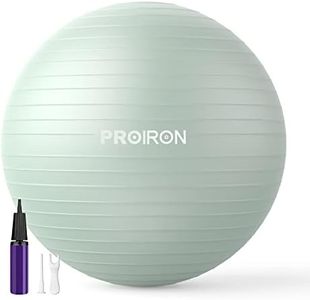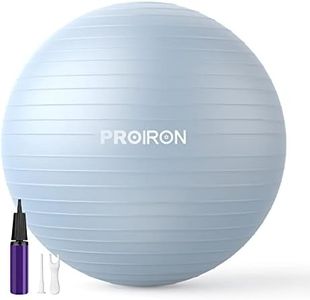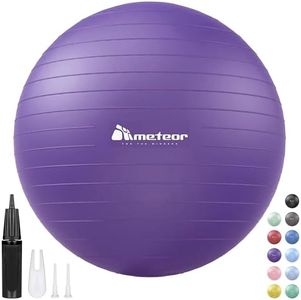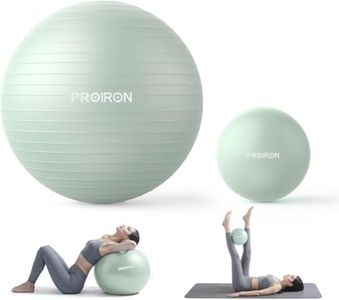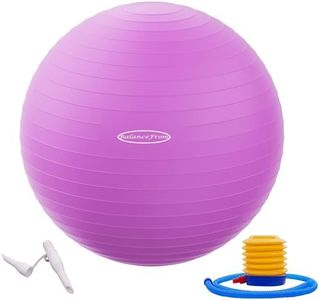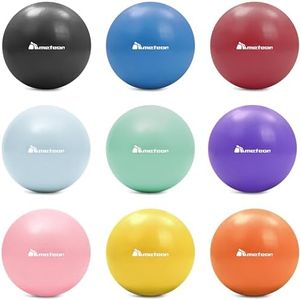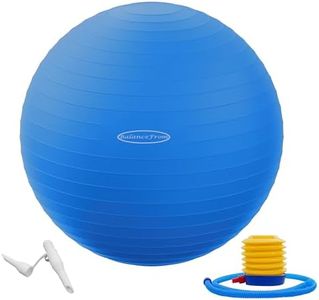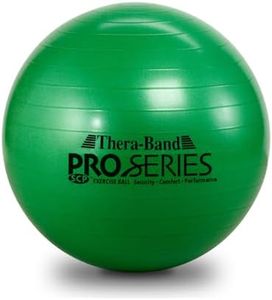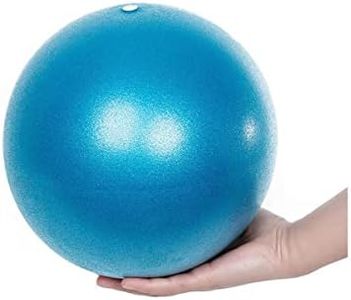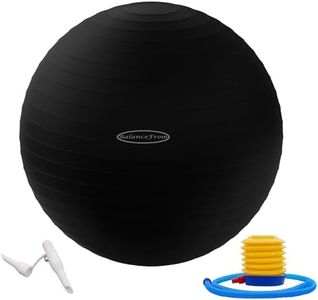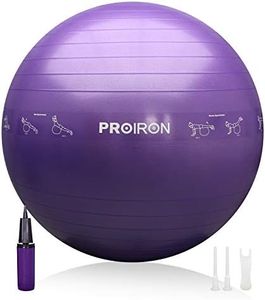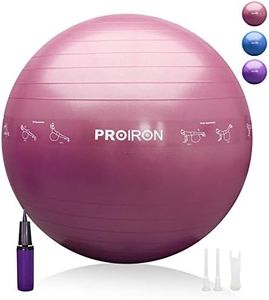We Use CookiesWe use cookies to enhance the security, performance,
functionality and for analytical and promotional activities. By continuing to browse this site you
are agreeing to our privacy policy
10 Best Yoga Balls
From leading brands and best sellers available on the web.By clicking on a link to a third party's website, log data is shared with that third party.
Buying Guide for the Best Yoga Balls
Yoga balls, also known as exercise balls or stability balls, are versatile pieces of fitness equipment used for core workouts, balance exercises, physical therapy, and even as alternative seating. Choosing the right yoga ball helps ensure comfort, safety, and effectiveness whether you’re using it for exercise, stretching, rehabilitation, or posture improvement. The main things to consider are your body size, intended use, and preferences regarding firmness and material.Size (Diameter)Size is typically indicated by the diameter of the yoga ball when fully inflated, usually measured in centimeters (like 55cm, 65cm, or 75cm). The right size is important because it ensures that when you sit on the ball, your knees are at about a 90-degree angle with your thighs parallel to the ground. This promotes good posture and stability. Smaller balls (around 45-55cm) are best for shorter people or children, mid-range sizes (65cm) suit most adults up to about 6 feet tall, and larger balls (75cm or above) are for taller users. Always choose a size that allows you to sit comfortably and stably with your feet flat on the floor.
Weight CapacityWeight capacity tells you the maximum load the yoga ball can safely support without risk of bursting or deformation. This is important for safety during dynamic movements or if you plan to use the ball as a seat for long periods. Weight limits commonly range from 200 to 300 kilograms (or about 400 to 600 pounds). If you’re close to the higher end of a ball’s weight rating or you plan to do exercises involving impact or bouncing, selecting a ball with a higher capacity adds extra safety.
Material Quality and ThicknessThe material quality and thickness of the yoga ball impact durability and the feel of the ball. Most balls are made from PVC or similar materials that should be resistant to bursting. Thicker walls mean more durability and better resistance to punctures, while thinner ones might be less stable or wear out faster. If you plan on intense workouts or using the ball on rough surfaces, look for anti-burst or extra-thick options. For gentle stretching or office seating, standard thickness is usually fine.
Surface TextureSurface texture refers to whether the ball is smooth or has some kind of grip pattern. This is important for stability and comfort during use. Balls with a textured or non-slip surface can help prevent sliding on floors or against your body, which is helpful in intense or sweaty workouts. A smoother ball may be easier to clean and slide better on some surfaces. If stability and safety during exercise matter most, look for subtle ribbing or textured grip.
Inflation Method & MaintenanceThe way you inflate the yoga ball (usually with a hand pump or foot pump) and the ability to maintain its firmness are practical considerations. A ball that is easy to inflate and can hold air well over time is more convenient for regular use. Some balls come with quick-inflate or anti-leak features. If you want a hassle-free experience, pick one that is simple to inflate and doesn't need frequent topping up. If possible, look for included accessories or instructions for proper inflation.
